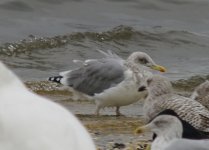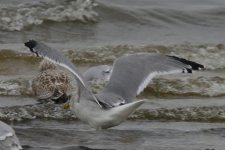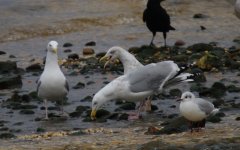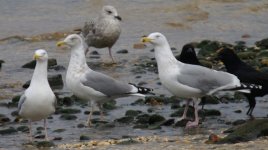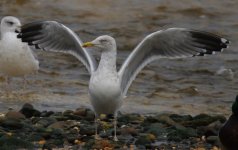hi cristian,
now trying it here, after the gull-people have refused to comment, hm?

i'll give it a try anyway. while primary pattern, esp. the amount and distribution of black on wingtip is perfectly ok for a michahellis as is the red orbital and the (even dull) yellow legs, i didn't like something in its "facial expression" from the beginning - i know this is very subjective - head shape with rel. weak bill and eyes somehow don't ring the bells for a normal female YLG. also it could have brighter yellow legs and a bit of red on upper mandible. and: p10 mirror is odd - somehow similar to common gull in its diagonal cut edge.
all these made me hesitate to call it a definite YLG, esp. in scotland where i think it is not a common sight.
now as for subspecies, i'm sure it would be arrogant to assess this bird to
lusitanicus. variation within nominate YLG is large enough to have a hard time ID-ing a lusitanicus outside its normal range, even though the paler mantle and lighter built could suggest this ssp..
if not a pure mich - i can't think of any other hybrid combo than
argenteus x mich, but this is really hard to prove! you see, suggestions. might well be a pure female YLG, with slight oddities but as a county recorder i'd be cautious in scotland with this bird. it could even be an extreme yellow-legged
argenteus HG with a lot of black in wingtip, but for such extremes in HG you might ask peter, chris, derek, steve or the dutch gull folks.
my two pence..




